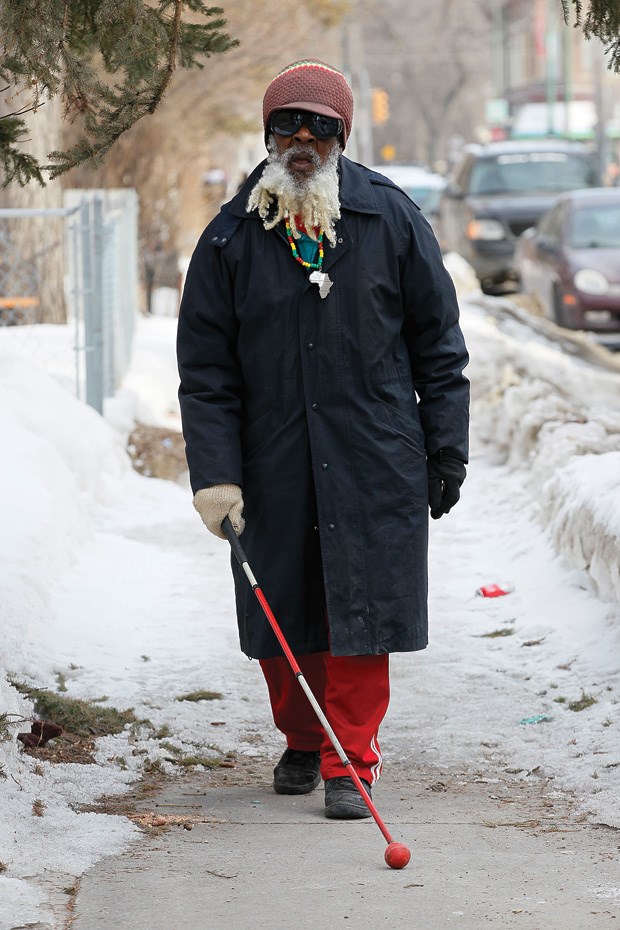Sponsored by the Canadian National Institute for the Blind
Rico John is the first to acknowledge that when he went blind in his early 60s, he hit a low point.
A native of Trinidad and Tobago, John moved to Canada just over 30 years ago to join his brother in Toronto, where he found work in factories.
When he was almost 50, after experiencing what he describes as cloudiness and distortion in his vision, he made an appointment to see a doctor of optometry for the first time in 30 years.
That’s when John learned he could be experiencing the first signs of glaucoma. Four years later, the diagnosis was confirmed.
Often called the “silent thief of sight”, the eye disease is caused by pressure inside the eye, resulting in damage to the optic nerve and subsequent serious vision loss.
According to CNIB (Canadian National Institute for the Blind), more than 250,000 Canadians are living with glaucoma, and people of African and Hispanic decent, like John, are at greater risk for open-angle glaucoma, the most common form. In fact, the disease had also blinded John’s mother.
There’s a good chance John could’ve saved his sight had he visited a doctor of optometry sooner.
“I do regret not seeing an eye doctor regularly,” says John, now 68. “My condition may have been diagnosed before it was, and treatment would have started earlier with a possible better outcome.”
At first, John’s diagnosis didn’t slow him down at all. After moving to Canada, he began building a career he loved as a community outreach worker. But as his glaucoma rapidly worsened, he faced new challenges.
“I was enjoying community work so much. But people thought I was snubbing them because I couldn’t see them.”
He was also having trouble reading his computer screen and getting around his neighbourhood. He says he developed a “stutter walk”, trying to feel his way in front of him with his feet.
Eventually, his sight loss became so severe that he was laid off from his job and began to worry about his safety. He knew then that he needed help.
John says he finally listened to friends in his community who told him to call CNIB, a charity that provides emotional and practical rehabilitation services to Canadians who are blind or partially sighted. Contacting them, he says, gave him hope.
“When I called CNIB, they said I would learn how to make my life all over again – learn how to not only see things in a different way but learn things in a new way.”
As someone who had lived most of his life with sight, John says his main concerns were about his safety and his mental health.
“I wanted to know – if I need a public washroom, can I get there? Can I get home safely? Can I keep myself from feeling sorry for myself or from falling into a deep depression?”
At CNIB, John took courses that helped him address his concerns.
He learned how to navigate sidewalks with a white cane, how to take a city bus and how to recognize traffic signals. A specialist accompanied John on all of his excursions until he was comfortable getting around independently, and he now calls them if he needs help getting somewhere new.
Still feeling emotional turmoil over his lifestyle change, John joined a weekly support group at CNIB where he could talk about his anxieties and relate to similar stories from other people with vision loss.
“In that similarity, I found strength,” John says.
The organization also set him up with career counselling, guiding him through the ins and outs of applying and interviewing for jobs.
“[The job counselling] keeps our hopes alive,” he says.
After receiving such personalized attention, John says he decided to become involved with CNIB in any way he could. He now visits his local branch several times a week to take part in groups like a book club, a coffee group and a choir.
“I never thought I’d sing in a choir but I love people and I love music,” he says, adding, “[CNIB] keeps you connected with others and involved in something. You feel a sense of accomplishment doing something functional.”
Still, learning to adapt to blindness has been far from easy. Had he known glaucoma could be treated if caught early through regular eye exams, he would never have let three decades pass without visiting his doctor of optometry, he says.
“I would suggest to everyone that they should see an eye doctor regularly. Especially because eye diseases are so prevalent,” he says.
May is Vision Health Month. Learn more at eyesareforlife.ca



